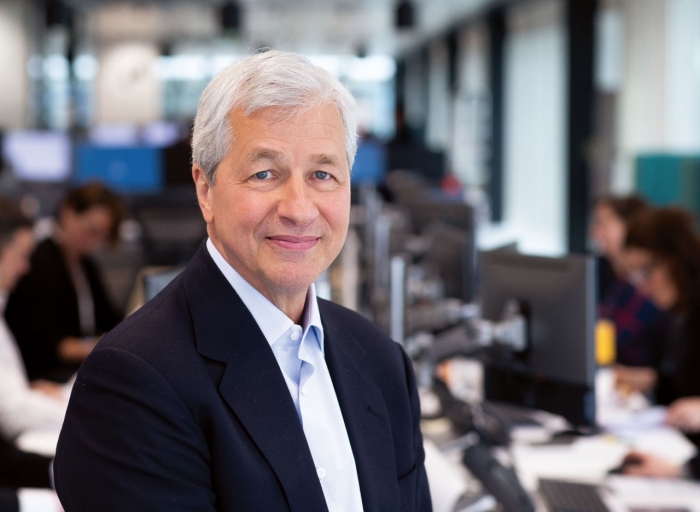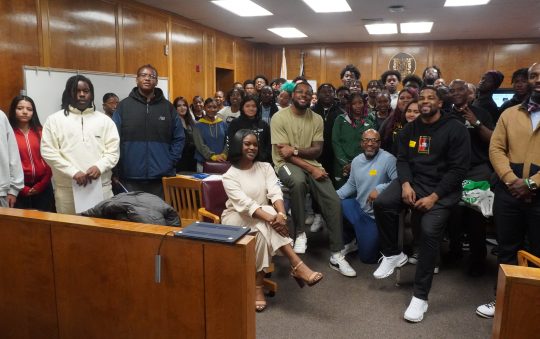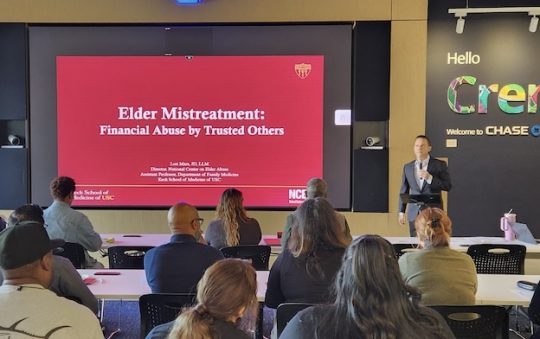
(Courtesy Photo)
Americans have lost trust in the ability of large institutions like the federal government, national media, and large companies – even big banks – to understand or care about their needs. This view is justified, particularly among communities of color and low-income households. Simply put, our country has done a bad job of looking out for and creating opportunity for everyone. We need to better understand the unique needs of communities across the United States and show up, listen, and make the right investments and decisions to regain trust. Impact is most effective and sustainable when it’s local.
Here in California, especially, many communities are struggling. Just last week, the LA Times reported that Los Angeles lost more than 160,000 residents to outward migration during the first year of the pandemic. On top of this, reporting shows that nearly half a million residents of Los Angeles do not have access to affordable housing. Some of this movement can be attributed to demographic changes but this trend also points towards deeper, systemic issues around racial equity and institutional failures to address local problems with local solutions. A local bank branch, especially in a low-income neighborhood, can only be successful when it fits the needs of its customers.
That is why over the last several years we have shifted our branch approach to drive equity, supporting our Black, Hispanic and Latino communities with access to financial health education and available banking services to help build wealth. These Community Center branches are unique spaces in the heart of urban communities. Beginning with Harlem, we have opened 11 more in communities like the Crenshaw District here in Los Angeles, another one in Oakland, and others in the South Side of Chicago, and the Anacostia neighborhood in Washington, D.C.
Most of them have opened since our $30 billion commitment to racial equity that we announced in October of 2020. These centers have more space to host grassroots community events, small business mentoring sessions, and financial health seminars. The majority were built by minority contractors and we hire local artists to bring them to life. There are plans for 17 of these unique branches in underserved communities by the end of the year, expanding to Miami, Atlanta, Baltimore, and Philadelphia and Tulsa. And as of the end of last month, we’ve retrofitted over 250 existing branches with spaces for the community to use.
We also want our branches to represent the neighborhoods they serve, which is why we continue to hire from our local communities. The Community Center Manager is a new role within the bank whose main job is to serve as local ambassadors to build trust and nurture relationships with community leaders, nonprofit partners, and small businesses. Nationwide, we have already hired nearly 150 people serving in these roles and here in Los Angeles we have hired 11 Community Managers since 2021. Over the last year they have hosted more than 1,300 community events reaching more than 36,000 people across the country.
In Los Angeles, our Community Managers are proud Angelenos. Some are Dreamers, some come from single-parent families, some speak multiple languages. But all of them are from the communities they serve. We want people who live and work in our communities to feel welcome and included when they visit our branches. We ask them to come as they are and bring the family and even their dog. And by being a familiar face from the neighborhood, our Community Managers are earning the trust of our neighbors.
I’ve attended many grand openings of our Community Center branches in person. We’ve hosted mayors, community partners, students and small business customers who have shared the sense of pride and optimism for what it means for their community. Our Community Managers and branch teams are always front and center at these events, demonstrating how deeply connected they are to the fabric of the area. One such example is our work with the City of Los Angeles, where our Community Managers are delivering financial health content to the city’s employees, and recently are partnering to help support their Angeleno Youth Development Department.
We know that to be sustainable this effort must be measured by results. Our company is closely tracking the number of accounts opened, the number of mortgages funded, new small business loans extended and a host of other metrics to ensure that we are achieving results and listening to feedback so we can have even greater impact in closing the wealth gap. Last October, we published a detailed report on our racial equity work, and we intend to be accountable, learn and share our experience building community through community banking.
We’re also taking a local approach to our community investments and advocating for local policy solutions. Our business is only as strong as our communities, so we are expanding our investments in places like Mattapan in Boston and Oak Cliff in Dallas to help local minority small businesses access the capital and support that they need to grow. We’ve expanded our homebuyer grant program, to $5,000 in order to help more customers cover closing costs and down payments when buying homes in 6,700 minority neighborhoods nationwide. We are also looking at alternative credit scores and other ways to increase homeownership in underserved communities and build generational wealth and stability. While it is early, our approach has the promise to create real local impact and help build back the trust that Americans deserve.
###







